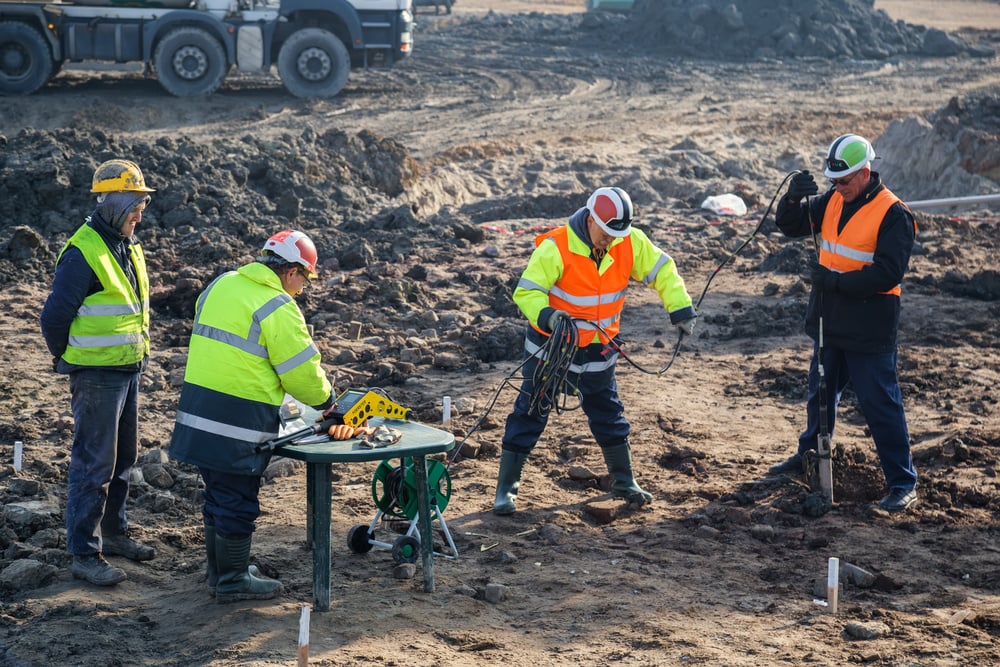All about Specialized Geotechnical Engineering Solutions
Table of ContentsThe Facts About Specialized Geotechnical Engineering Solutions RevealedSpecialized Geotechnical Engineering Solutions Fundamentals ExplainedNot known Details About Specialized Geotechnical Engineering Solutions The smart Trick of Specialized Geotechnical Engineering Solutions That Nobody is Talking About9 Easy Facts About Specialized Geotechnical Engineering Solutions ShownSpecialized Geotechnical Engineering Solutions for Beginners
William Rankine, an engineer and physicist, developed a different to Coulomb's planet pressure theory. Albert Atterberg created the clay uniformity indices that are still utilized today for dirt category. In 1885, Osborne Reynolds identified that shearing reasons volumetric expansion of thick materials and tightening of loose granular products. Modern geotechnical engineering is said to have actually begun in 1925 with the magazine of Erdbaumechanik by Karl von Terzaghi, a mechanical engineer and rock hound. Terzaghi additionally established the structure for theories of bearing ability of foundations, and the concept for forecast of the rate of negotiation of clay layers as a result of loan consolidation. Later on, Maurice Biot totally developed the three-dimensional dirt consolidation theory, expanding the one-dimensional model previously created by Terzaghi to more general theories and presenting the set of fundamental formulas of Poroelasticity.
Geotechnical engineers examine and figure out the buildings of subsurface conditions and materials.
6 Simple Techniques For Specialized Geotechnical Engineering Solutions
Geologic mapping and interpretation of geomorphology are generally finished in appointment with a geologist or design rock hound. Subsurface exploration generally includes in-situ testing (for instance, the basic infiltration test and cone infiltration test). The excavating of test pits and trenching (particularly for finding faults and slide airplanes) may likewise be used to find out about dirt problems at deepness. Still, they are often used to permit a geologist or designer to be lowered right into the borehole for direct aesthetic and manual exam of the soil and rock stratigraphy. Different dirt samplers exist to meet the demands of different design projects. The typical penetration examination, which uses a thick-walled split spoon sampler, is the most typical means to collect disrupted examples.

Commonly, the user interface's exact geometry is unknown, and a streamlined user interface geometry is presumed. Limited inclines need three-dimensional designs to be examined, so most slopes are evaluated presuming that they are considerably large and can be stood for by two-dimensional versions.
Rumored Buzz on Specialized Geotechnical Engineering Solutions

Measurement of amounts and assessment of real conditions. It is improper for projects whose layout can not be altered throughout construction.
Concepts of Geotechnical Design. Thomson Learning. Budhu, Muni (2007 ). Dirt Technicians and Foundations. John Wiley & Sons, Inc. other . ISBN 978-0-471-43117-6. Disrupted dirt properties and geotechnical design, Schofield, Andrew N., Thomas Telford, 2006. Guerriero V., Mazzoli S. (2021 ). "Concept of Effective Stress in Soil and Rock and Ramifications for Fracturing Processes: A Review".
Top Guidelines Of Specialized Geotechnical Engineering Solutions
Concepts and Method of Ground Renovation. Ground Enhancement Principles And Applications In Asia. Style analysis in rock technicians.
Cengage Learning, Stamford, 666 p. Atkinson, J., 2007. The auto mechanics of dirts and foundations. The Observational Technique in ground design principles and applications.
The Basic Principles Of Specialized Geotechnical Engineering Solutions
These records are customized to fulfill the particular requirements of a job and include style specifications and advice for the building of a variety of synthetic frameworks. As offering working as a consultant services covering areas such as incline stability and load-bearing abilities for various products, these designers undertake research study and advancement tasks to improve techniques, tools, materials understanding and evaluation covering entire lifecycles.
Design the homes and mechanics of rocks consisting of the application of characteristics, liquid mechanics, kinematics and material technicians. This brings with each other geology, soil and rock technicians, and architectural engineering for the layout and building and construction of foundations for a series of civil design jobs. This field includes forecasting the efficiency of structure dirt and rock to a tons imposed by a framework, while thinking about performance, economy and safety and security.
Prices of pay generally boost as your knowledge and abilities expand, with guidelines aiming to a graduate starting income of in between 18,000 and 28,000 per year in the UK. This rises to 26,000 to 36,000 with a couple of years of experience and afterwards reaching 40,000 to 60,000+ for senior, legal or master engineers.
How Specialized Geotechnical Engineering Solutions can Save You Time, Stress, and Money.
However, with the best application it is possible to grasp the occupation and gain entrance to a difficult yet fulfilling and vital career. A geologist would require to re-train to become a geotechnical engineer, although there is plenty of cross-over between both professions, which can make this easier. Geologists require to have an her latest blog understanding of dirts, rocks and various other materials from a scientific point of view, while geotechnical designers story their i was reading this understanding of matters such as soil and rock technician, geophysics and hydrology and use them to design and environmental projects.
When beginning out, these designers will have a tendency to work with less complex tasks, developing understanding and experience ready for more tough work later. Geotechnical designers have a tendency to specialise in specific locations as they grow in experience, concentrating on certain facilities such as railways, roadways or water. These engineers also deal with renewable resource, offshore and onshore oil and gas, nuclear power, and a lot more.